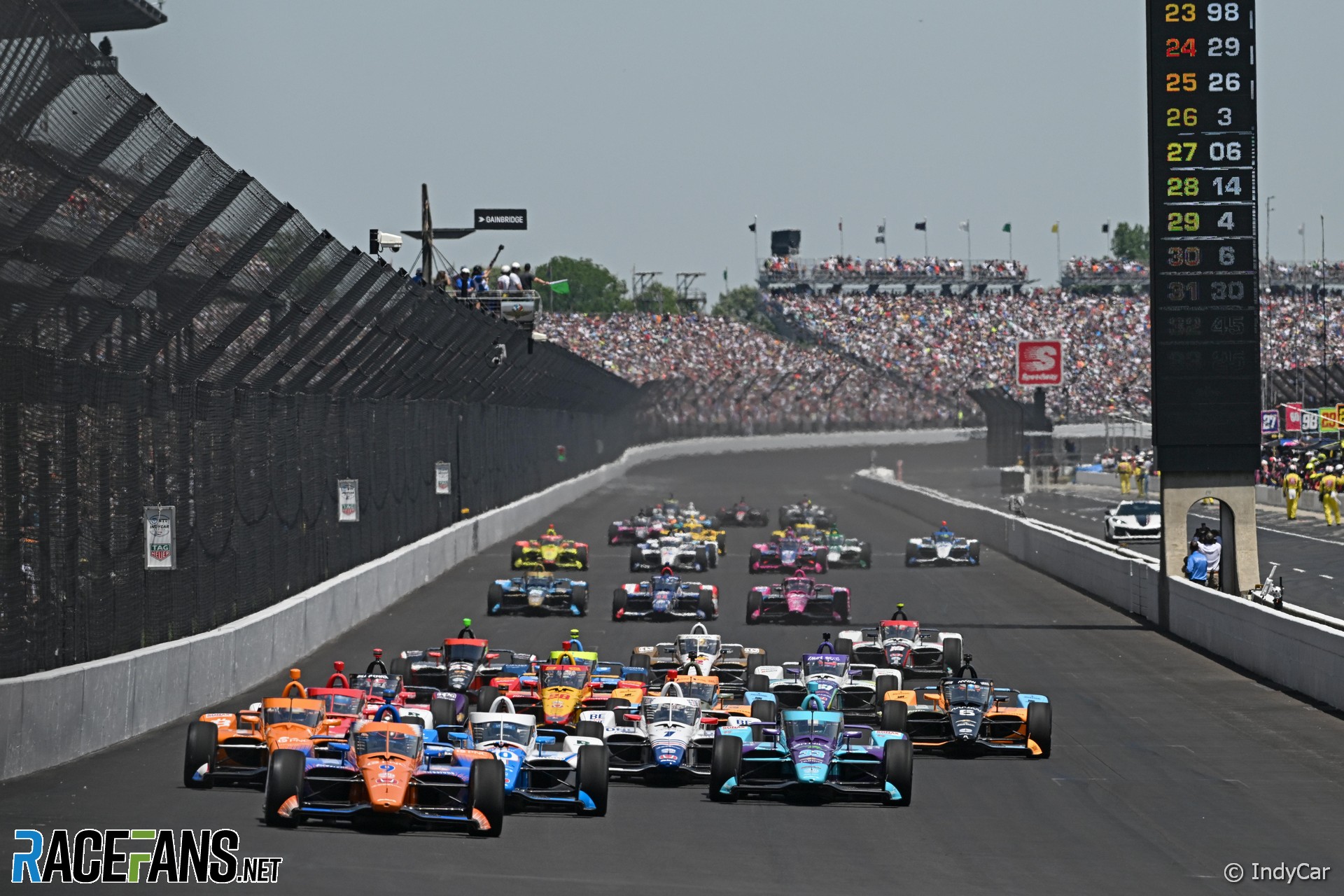IndyCar has changed plans for its new engine formula again, but says it remains committed to introducing hybrid power units in 2024.
Three years ago the series announced it would switch from its current 2.2-litre V6 twin-turbo engines to 2.4-litre versions mated to hybrid drive systems for the 2022 season. But the introduction of the new engines, intended to increase power from 700bhp to 900bhp, has been pushed back twice, first to 2023 and then 2024.Today the series announced it has “paused” plans to introduce its larger, 2.4-litre engines. However it remains determined to add hybrid drive to the series in the season after next. These will now be incorporated alongside the 2.2-litre motors which the series has used since 2012.
“The 2.2-litre IndyCar engines supplied by Honda and Chevrolet have provided the most competitive racing in the world,” said IndyCar series president Jay Frye. “The 2024 hybrid engine package will provide even more excitement with horsepower increases over the current engine.”
An IndyCar spokesperson denied the decision to continue using the 2.2-litre engines was a result of parts shortages or supply chain problems. The series remains committed to the current timeline for the introduction of its new power units, testing of which will continue in 2023.
The introduction of hybrid power units is part of IndyCar’s move to improving the sustainability of its championship. Its cars will use “100% renewable” fuel from the start of next season and it will expand the use of sustainable guayule rubber which appeared in some of the tyres raced during 2022.
Advert | Become a RaceFans supporter and
IndyCar
- McLaughlin and Power put Penske back on top with one-two
- McLaughlin denies Power pole position to lead Penske one-two in Barber
- Newgarden admits he “failed my team miserably” over disqualification
- Ghiotto gets 11th hour call-up for IndyCar debut at Barber
- McLaughlin and Power accept penalties over misuse of push-to-pass system





Proesterchen (@proesterchen)
6th December 2022, 18:45
Never bet against the absolute cheapness of everyone involved in Indycar. Changes may only happen when someone else foots the bill AND provides outright subsidies, too. The larger the more likely.
S
7th December 2022, 1:11
It’s a (mostly) spec series, and the series administrators aren’t the ones paying for the cars. They do need to be affordable.
Just for comparison – F1’s current engine spec has been going for a decade already, and also isn’t due for replacement (also downgraded to a minor adjustment) for a few more years yet.
M
6th December 2022, 19:46
Cars that can accelerate quicker might produce less interesting racing – if it takes longer for the car behind to catch up after each corner. Look at how F1 is boring on so many of the tracks.
amian
7th December 2022, 12:13
Your understanding of this is completely flawed.
It will not take longer for the following car to “catch up” distance (the time interval is fixed), because he also accelerates faster. What matters is that the higher speed obtained on the straights, the longer the braking distances and THAT is what enables overtaking chances and so will increase them.
Since IndyCars won’t be any faster in the corners (and that’s F1s problem), the speed amplitude will be larger than it is, which facilitates overtaking.
Imagine an opposite scenario – that is the cars having only 50bhp and only reaching a top speed of 130kph – the speed at which they would easily go through all corners. The speed would be constant – zero speed amplitude – no braking and no accelerating, therefore absolutely no chance at overtaking.
AlanD
7th December 2022, 13:47
Amian, interesting points. Do you think there might be a case for going back to steel brakes which would have less stopping power, create a longer braking zone, and increase overtaking opportunities? It seems to me that we see see much less late braking overtakes these days, and when we do get them, they are much more likely to end in collisions and penalties.
amian
7th December 2022, 20:18
Hah, AlanD, definitely, if they wanted to create more overtaking than surely implementing weaker brakes (no matter the technology) would benefit that particular cause. Although as regards steel brakes, Alex Zanardi used steel discs in 1999 at Williams and his car’s braking performance seemed identical to the car of his team-mate Ralph Schumacher, which probably means that brake pads material has a larger impact on the braking efficiency than the discs themselves.
Correct me if I’m wrong, but I think it is weight that is the main argument against steel brake discs and it’s a significant one these days, especially when the hybrid systems will make IndyCars even heavier, sth the drivers heavy already complained at.
Dan G (@dang)
9th December 2022, 23:05
I was faintly looks forward to a car that might actually be faster than an F2 car. Oh well